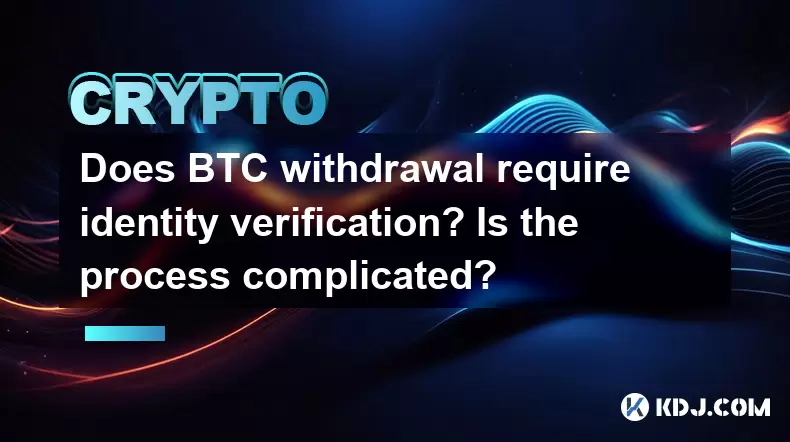-
 Bitcoin
Bitcoin $118600
0.36% -
 Ethereum
Ethereum $3855
1.06% -
 XRP
XRP $3.195
-0.09% -
 Tether USDt
Tether USDt $1.000
-0.04% -
 BNB
BNB $844.5
6.23% -
 Solana
Solana $191.3
2.83% -
 USDC
USDC $0.9997
-0.01% -
 Dogecoin
Dogecoin $0.2376
0.10% -
 TRON
TRON $0.3242
0.83% -
 Cardano
Cardano $0.8222
0.13% -
 Hyperliquid
Hyperliquid $45.26
6.53% -
 Sui
Sui $4.200
-2.56% -
 Stellar
Stellar $0.4336
-1.24% -
 Chainlink
Chainlink $18.86
0.28% -
 Hedera
Hedera $0.2796
-1.75% -
 Bitcoin Cash
Bitcoin Cash $583.3
-1.84% -
 Avalanche
Avalanche $27.06
8.09% -
 Litecoin
Litecoin $112.3
-1.16% -
 Toncoin
Toncoin $3.353
0.58% -
 UNUS SED LEO
UNUS SED LEO $8.968
-0.11% -
 Shiba Inu
Shiba Inu $0.00001395
-0.54% -
 Ethena USDe
Ethena USDe $1.001
-0.03% -
 Uniswap
Uniswap $10.76
0.69% -
 Polkadot
Polkadot $4.175
0.26% -
 Monero
Monero $326.7
1.07% -
 Bitget Token
Bitget Token $4.665
1.61% -
 Dai
Dai $0.9998
-0.02% -
 Pepe
Pepe $0.00001271
0.32% -
 Cronos
Cronos $0.1416
2.01% -
 Aave
Aave $299.3
1.15%
Does BTC withdrawal require identity verification? Is the process complicated?
BTC withdrawal may require identity verification depending on the exchange; the process involves KYC and can be straightforward once familiar with the steps.
May 12, 2025 at 10:56 pm

Does BTC withdrawal require identity verification? Is the process complicated?
Withdrawing Bitcoin (BTC) from a cryptocurrency exchange is a common task for many users in the crypto space. However, the question of whether this process requires identity verification and how complicated it is often arises. This article will delve into these aspects, providing a detailed explanation of the identity verification requirements and the steps involved in withdrawing BTC from an exchange.
Understanding Identity Verification for BTC Withdrawal
Identity verification, also known as Know Your Customer (KYC) procedures, is a standard practice adopted by many cryptocurrency exchanges. The primary purpose of KYC is to prevent fraud, money laundering, and other illegal activities. While not all exchanges require identity verification for every transaction, many do mandate it for withdrawals, especially for larger amounts.
The necessity of identity verification for BTC withdrawal varies depending on the exchange. Some platforms allow small withdrawals without verification, but for significant amounts, they often require users to complete a KYC process. This process typically involves submitting personal identification documents such as a passport, driver's license, or national ID card, along with proof of address.
The Process of Identity Verification
To understand if identity verification is required for BTC withdrawal, users must familiarize themselves with the specific policies of their chosen exchange. Here is a general outline of the steps involved in the identity verification process:
- Register an account on the cryptocurrency exchange.
- Navigate to the verification section of the platform, usually found in the account settings or security settings.
- Submit personal identification documents. This may include a photo of your passport, driver's license, or national ID card.
- Provide proof of address. This can be a utility bill, bank statement, or any official document that shows your current address.
- Wait for verification. The exchange will review your documents, and this process can take anywhere from a few hours to several days.
Once the verification is complete, users can proceed with withdrawing BTC from their account.
Withdrawing BTC from an Exchange
The process of withdrawing BTC from an exchange can vary slightly depending on the platform, but the general steps are as follows:
- Log into your account on the cryptocurrency exchange.
- Navigate to the withdrawal section. This is usually found under the "Wallet" or "Funds" section of the platform.
- Select Bitcoin (BTC) as the cryptocurrency you wish to withdraw.
- Enter the withdrawal amount. Make sure to double-check the amount to avoid any errors.
- Specify the destination address. This is the Bitcoin address where you want the funds to be sent. Ensure that the address is correct, as transactions cannot be reversed.
- Review the transaction details. Most exchanges will show a summary of the withdrawal, including any fees that may apply.
- Confirm the withdrawal. You may be required to enter a two-factor authentication (2FA) code to proceed.
- Wait for the transaction to be processed. The time it takes for the BTC to reach your wallet can vary, but it typically takes a few minutes to an hour.
Is the BTC Withdrawal Process Complicated?
The complexity of the BTC withdrawal process can depend on several factors, including the user's familiarity with cryptocurrency transactions and the specific requirements of the exchange. For users who are new to the crypto space, the process might seem daunting at first. However, once you understand the steps involved, it becomes more straightforward.
Key factors that can affect the complexity of the process include:
- Identity verification requirements. If an exchange requires KYC for withdrawals, this adds an extra step to the process.
- User interface of the exchange. Some platforms have more user-friendly interfaces than others, which can impact the ease of navigating through the withdrawal process.
- Transaction fees and limits. Understanding the fees associated with withdrawals and any limits imposed by the exchange can also affect the perceived complexity.
Tips for a Smooth BTC Withdrawal Experience
To ensure a smooth BTC withdrawal experience, consider the following tips:
- Choose a reputable exchange. Research the platform's reputation, security measures, and user reviews before signing up.
- Understand the exchange's policies. Familiarize yourself with the specific requirements for withdrawals, including any identity verification processes.
- Double-check all details. Before confirming a withdrawal, ensure that the amount, destination address, and any other details are correct.
- Enable two-factor authentication (2FA). This adds an extra layer of security to your account and can help prevent unauthorized withdrawals.
Frequently Asked Questions
Q: Can I withdraw BTC without completing identity verification on any exchange?
A: Some exchanges allow small withdrawals without identity verification, but for larger amounts, most platforms require KYC. It's essential to check the specific policies of the exchange you are using.
Q: How long does it take to complete the identity verification process?
A: The duration can vary from a few hours to several days, depending on the exchange and the volume of verification requests they are processing.
Q: What should I do if my identity verification is rejected?
A: If your identity verification is rejected, review the reasons provided by the exchange. Common issues include poor quality images, expired documents, or discrepancies in the information provided. Resubmit the required documents with the necessary corrections.
Q: Are there any fees associated with BTC withdrawals?
A: Yes, most exchanges charge a withdrawal fee for BTC transactions. The fee amount can vary depending on the platform and the network congestion at the time of the withdrawal. Always check the fee structure before initiating a withdrawal.
Disclaimer:info@kdj.com
The information provided is not trading advice. kdj.com does not assume any responsibility for any investments made based on the information provided in this article. Cryptocurrencies are highly volatile and it is highly recommended that you invest with caution after thorough research!
If you believe that the content used on this website infringes your copyright, please contact us immediately (info@kdj.com) and we will delete it promptly.
- Crypto Investments, Dogecoin Substitutes, and Wealthy Returns: Navigating the Meme Coin Mania and Beyond
- 2025-07-29 00:30:13
- Week Review: July 21 - July 27 - Crypto, AI, and Trade Deals, Oh My!
- 2025-07-29 00:30:13
- Bitcoin, Gold, and Debt Hedges: A New Yorker's Take
- 2025-07-29 00:50:12
- Bitcoin, Japan, Metaplanet: A New Era of Corporate Crypto Adoption?
- 2025-07-29 00:50:12
- Bitcoin Bonanza in Japan: Metaplanet Leads the Charge
- 2025-07-29 00:55:23
- Bitcoin, Merger, and ProCap Financial: A New Era for Crypto in Traditional Finance
- 2025-07-29 00:55:23
Related knowledge

What is the significance of the 21-week EMA in a Bitcoin bull market?
Jul 10,2025 at 06:56pm
Understanding the 21-Week EMA in Cryptocurrency AnalysisThe 21-week Exponential Moving Average (EMA) is a technical indicator widely used by traders a...

How to identify a volatility contraction pattern on Bitcoin using indicators?
Jul 07,2025 at 07:28am
What is a Volatility Contraction Pattern in Bitcoin Trading?A volatility contraction pattern refers to a phase where the price movement of an asset, s...

Do indicators work better on a logarithmic or linear scale for Bitcoin's long-term chart?
Jul 08,2025 at 01:42pm
Understanding Chart Scales in Cryptocurrency TradingIn cryptocurrency trading, particularly for analyzing Bitcoin's long-term trends, chart scales pla...

What is the Woodies CCI indicator and can it be used for Bitcoin?
Jul 04,2025 at 05:14pm
Understanding the Woodies CCI IndicatorThe Woodies CCI indicator is a variation of the traditional Commodity Channel Index (CCI), which was originally...

How to use indicators to trade the opening range breakout for Bitcoin CME futures?
Jul 05,2025 at 07:35pm
What Is the Opening Range Breakout Strategy?The opening range breakout (ORB) strategy is a popular trading technique used in both traditional markets ...

How to use the Relative Vigor Index (RVI) for Bitcoin trading?
Jul 07,2025 at 02:00pm
Understanding the Relative Vigor Index (RVI)The Relative Vigor Index (RVI) is a technical analysis tool used to assess the strength of price movements...

What is the significance of the 21-week EMA in a Bitcoin bull market?
Jul 10,2025 at 06:56pm
Understanding the 21-Week EMA in Cryptocurrency AnalysisThe 21-week Exponential Moving Average (EMA) is a technical indicator widely used by traders a...

How to identify a volatility contraction pattern on Bitcoin using indicators?
Jul 07,2025 at 07:28am
What is a Volatility Contraction Pattern in Bitcoin Trading?A volatility contraction pattern refers to a phase where the price movement of an asset, s...

Do indicators work better on a logarithmic or linear scale for Bitcoin's long-term chart?
Jul 08,2025 at 01:42pm
Understanding Chart Scales in Cryptocurrency TradingIn cryptocurrency trading, particularly for analyzing Bitcoin's long-term trends, chart scales pla...

What is the Woodies CCI indicator and can it be used for Bitcoin?
Jul 04,2025 at 05:14pm
Understanding the Woodies CCI IndicatorThe Woodies CCI indicator is a variation of the traditional Commodity Channel Index (CCI), which was originally...

How to use indicators to trade the opening range breakout for Bitcoin CME futures?
Jul 05,2025 at 07:35pm
What Is the Opening Range Breakout Strategy?The opening range breakout (ORB) strategy is a popular trading technique used in both traditional markets ...

How to use the Relative Vigor Index (RVI) for Bitcoin trading?
Jul 07,2025 at 02:00pm
Understanding the Relative Vigor Index (RVI)The Relative Vigor Index (RVI) is a technical analysis tool used to assess the strength of price movements...
See all articles

























































































